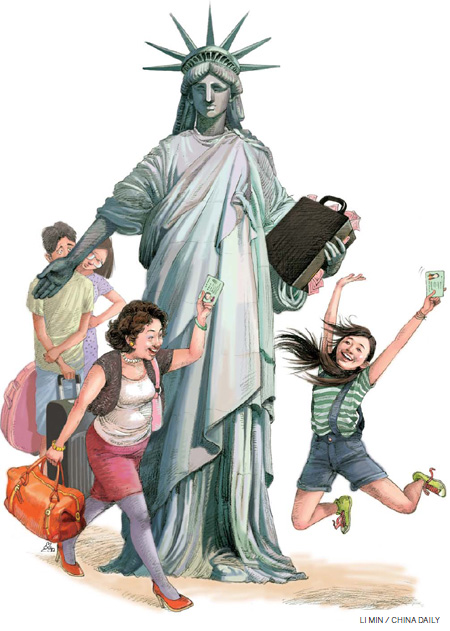The American dream of the Chinese rich
For many of China's wealthy, investing US$500,000 in a US government program is the best way to obtain a green card - for them or their children.
 |
|
The American dream of the Chinese rich |
Yvonne Liu, 22, wanted to stay in the United States after her university studies, and her mother, a 46-year-old wealthy Chinese businesswoman, figured out a way to make that happen.
Lily Zhang flew to the US to look for investment opportunities. Her plan was to move some of her international trade business from the city of Xiamen in southern China to southern California.
She has registered a branch of her company in the US, which is a way for her daughter to stay in the West after her studies at the University of Missouri at Columbia. (Zhang would not give their real names because her project is still ongoing.)
"When it grows bigger, I can give this part of the business to my daughter," Zhang said.
According to statistics from the US Department of State, the number of so-called "investor green cards" issued to non-Americans nearly tripled to 4,218 in the 2009 fiscal year. About 1,800 of those recipients are from the Chinese mainland. South Korea is second with 903 recipients.
In comparison, just 1,443 investor visas, referred to as EB-5 visas, were issued in fiscal year 2008.
The real estate price hike and stock market boom in China has enabled the rich to spend lots of money for their American dreams. And many of them, like Zhang, are doing this for their children.
After two years of planning, Zhang's company, which makes paper out of limestone, will be an operational company in the US within six months.
"It will create at least 700 jobs for locals," Zhang said. With California's unemployment rate of over 12 percent, she found it an ideal time to invest in an American dream for her daughter, and she is willing to pay big money for it.
The $70 million investment partly comes from her pocket, as well as bank loans. Another one third of it comes from 50 EB-5 investor visas that can help 50 other Chinese wealthy people who can pay a minimum of US$500,000 for permanent residency in the US. These EB-5 quotas could help her raise US$25 million for her company.
Other people who own companies like Zhang's are trying to raise money from wealthy investors who want to get a green card. Regional centers, which refer to high-unemployment areas designated by the US Citizenship and Immigration Service (USCIS), are also eligible to receive immigrant investor money.
The number of approved regional centers has surged. In January 2009, only 30 EB-5 regional centers existed, but as of July 2010, 100 regional centers had been approved by USCIS.
The first to notice the surge of Chinese applicants for investor green cards was the lawyers who specialize in visa applications. At his law office in City of Industry, California, immigration attorney David Fang took his first investment immigration case for a client from Taiwan when the program was authorized in 1992.
At that time, the investment was US$1 million. Now the minimum is $500,000.
Ten years ago, 70 percent of his clients were from Taiwan and the rest were from Hong Kong. "Now, 70 percent of them are from the Chinese mainland," Fang said.
 0
0 







Go to Forum >>0 Comments